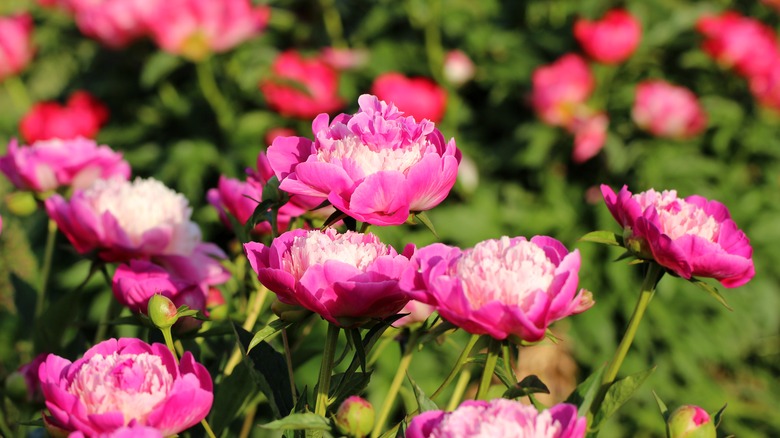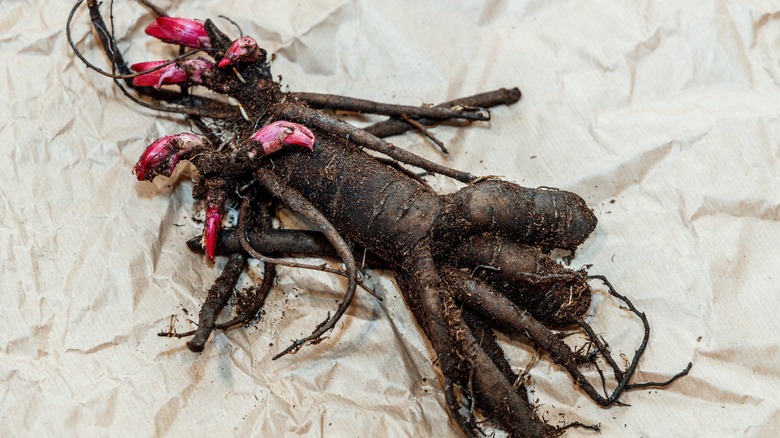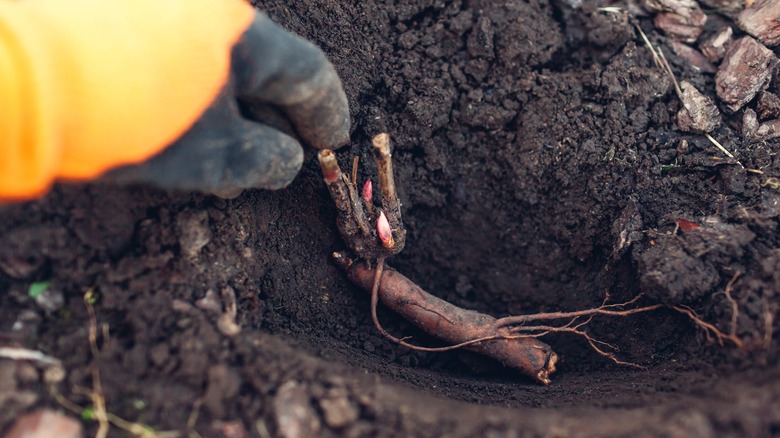Is Soaking Your Peony Tubers A Waste Of Time? Here's What House Digest's Master Gardener Says
Before you plant your peony tubers, some believe that you should soak them in water. This is because, depending on where you purchase them from, these tubers can look quite dry. High-quality sellers dig up and divide their peonies right after they finish blooming, so these tubers haven't had a chance to dry out. However, unless you plant your tubers right after purchasing, they may lose lots of moisture before you establish them in the ground. On the other hand, peony roots sold in big box stores in the spring may have been stored over the winter in cool, damp spaces, but they can still dry out when they hit store shelves. Therefore, regardless of where they're purchased from, soaking your peony tubers in water right before planting may be a good idea. This is because soaking will provide them with extra hydration and ensure you successfully grow your peonies.
When shopping for peony tubers, you might be surprised to discover that they are typically sold as bare-root tubers or long, thin sections of a root cutting. To get the most growth from your peonies, look for root sections that have at least three "eyes," which are the nodules on the root that will grow into stems. Then, soak these tubers in some water before planting them in the ground.
How to soak peony tubers
Freshly-harvested peony roots should not need to be soaked, since they are still holding the moisture they need to get established. On the other hand, if you buy bare root tubers in the spring or they have been in storage for a while, it may be hard to tell if they are still viable. In fact, they sometimes even look like dry sticks in the package. If you know it's going to be a few weeks between your purchase and when you actually plant your peony tubers, you can store them in the refrigerator in their original packing material for about three weeks.
Those with dry tubers can restore their moisture by soaking them in room-temperature water right before planting. You do not want to keep them very wet for long because too much moisture can cause them to rot, so only let them soak for half an hour. Fill a bowl or bucket with water, add your bare roots, and let them absorb the moisture. Make sure you are using room temperature or slightly warmer water and not cold water, since the cold may restrict plant tissues rather than opening them. Soaking these root sections helps open the pores and re-hydrate them. Once that outer tissue is no longer dried out, those pores are primed and ready to take in nutrients and water from the soil after they are planted.
Planting peonies
While the tubers are soaking, it's important to prepare the spot where they are to be planted. They will grow best and produce the most blooms with full sun in soil that drains well. Peonies are prone to root rot, so a low-lying area or a flower bed with poor drainage may be harmful to your newly-planted tubers. Further, the best time of year to plant peonies is in the fall.
Dig a hole up to 1 foot wide and 1 foot deep. Mix the soil you removed with about ⅓-part compost to feed the root sections continuously over the winter. Backfill your hole with your amended soil mix, then remove the tubers from the water and place them in the hole with the eyes facing up, about 1 inch below the surface of the soil. Be careful not to damage the delicate pink eye sprouts. This loosened soil will help the roots grow more easily while giving your new peonies the nutrients they need to thrive. Water the area thoroughly after planting so your soaked tubers stay consistently moist.


